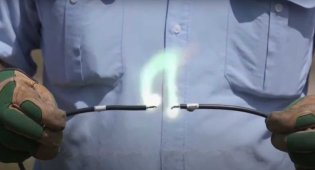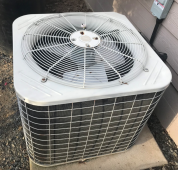The following Youtube video from Midnight Solar discusses the direction the breaker should be placed. It starts at about 4:30 in the video.
I watched the video. He said which way to connect the breaker.
He did not detail the various circuit failure scenarios involving shorts that could develop (e.g. rat chews through insulation in PV wires causing short) and explain how the breakers would always be called upon to interrupt current in the direction they were designed for.
I say that polarized breakers can't be used properly in either PV or SCC/battery connections (PV being higher voltage approaching breaker rating has better chance to fail.)
They would be fine between a power source and a load, where the load can't store energy and drive back in the other direction. In other words, DC branch circuits.
Best to use non-polarized breakers instead. Midnight's 175A breakers are non-polarized. They have non-polarized breakers in their catalog that look appropriate for PV arrays.
I don't know a lot about this stuff, but when the manufacturer tells me exactly how to use their product I always listen.
Listen, but consider they may be wrong. If they are, do something better. (not use that particular product differently, rather use a different product that is appropriate.)
I've presented reasoning several times why polarized breakers can't provide the required backfeed protection for multiple parallel strings. If we haven't heard of wires or breaker burning up due to breaker not interrupting arc, that is because the shorted string scenario is rare enough that there have been zero or few failures.
I could easily assemble a parallel string scenario and close a switch to induce short that would create conditions matching Midnight's description of what causes polarized breakers to burn.
My recommendation is to only used non-polarized DC breakers for multiple parallel PV strings (even just 2 strings, if individual breaker per string is used.) Or, gang the handles of all polarized breakers in the array.
The + symbol indicates the source capable of the maximum power, not the maximum voltage.
I disagree.
The "+" symbol on a polarized breaker indicates that when breaker is opened, that terminal needs to end up at a more positive voltage relative to the "-" terminal. That determines direction of electron flow in the arc between contacts. A permanent magnet creates a magnetic field that deflects the arc into an arc chute where it is quenched. If electron flow in arc was reversed, arc would be deflected away from arc chute and would just keep burning.
When you have charge controller connected to battery, during charging the charge controller provides higher potential (e.g. 60V vs. battery 48V). When PV source is gone, battery may have reached 60V and charge controller has capacitors that may be at 60V. If disconnected, capacitors gradually drain to 0V, or if failure shorts charge controller it is 0V and can sink a lot of current. A breaker between battery and charge controller has to work bidirectionally so does not seem like the place to use a polarized breaker. However, with only about 12V between charge controller output and battery, it may work OK to interrupt current even in reverse direction. So putting "+" on battery and "-" on charge controller positive terminal is something you might get away with.
For protecting multiple parallel PV strings, I don't believe there is a safe way to use polarized breakers. The wires could have a short at input to SCC, or the wires could have a short of a single string at other side of breaker. A polarized breaker will only interrupt the arc in one of those directions, will sit there burning in the other. It will likely work every time it is switched, without a short. But if a short develops and the breaker is tripped or thrown with wrong polarity applied, it will burn.







